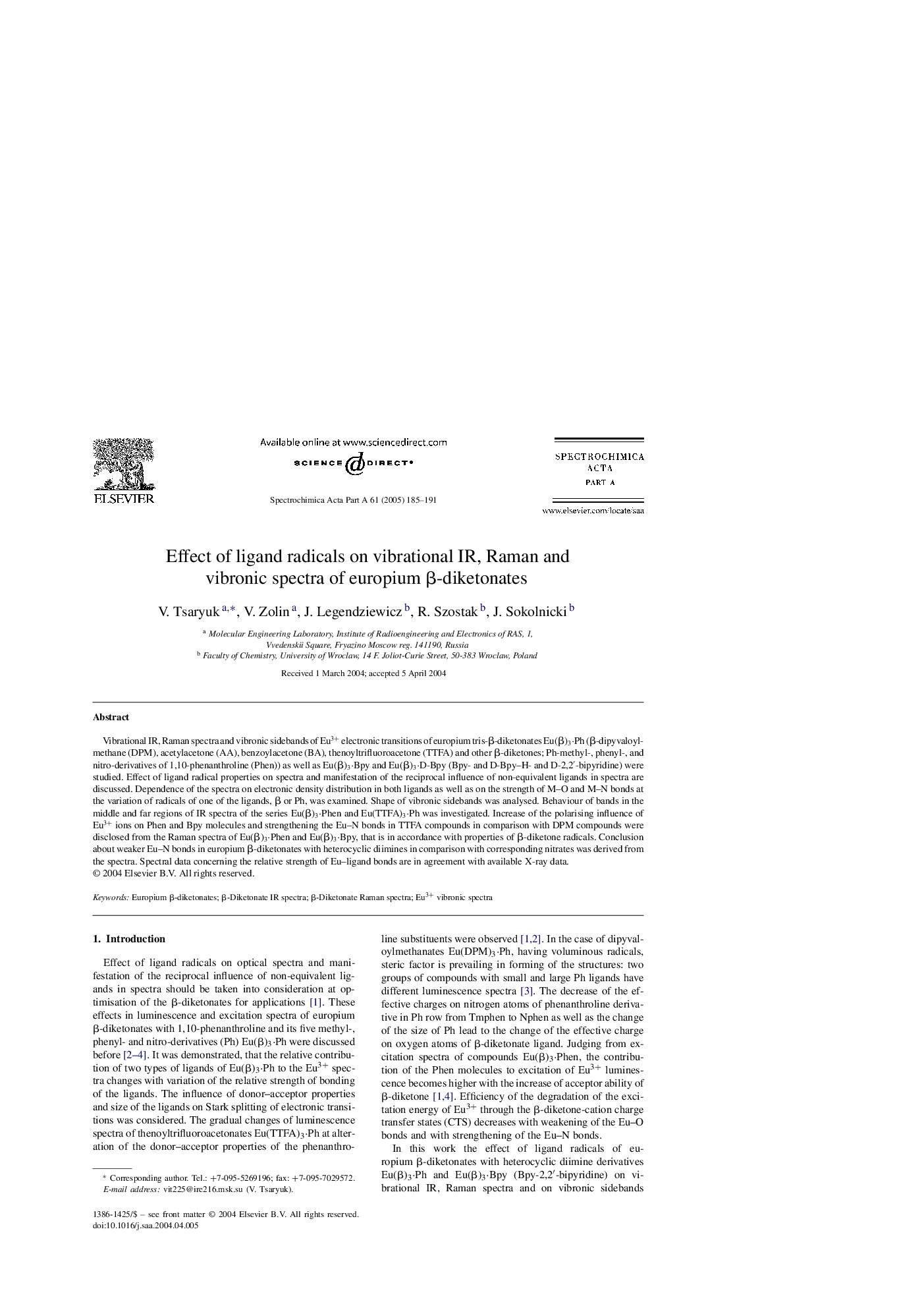| Article ID | Journal | Published Year | Pages | File Type |
|---|---|---|---|---|
| 9757105 | Spectrochimica Acta Part A: Molecular and Biomolecular Spectroscopy | 2005 | 7 Pages |
Abstract
Vibrational IR, Raman spectra and vibronic sidebands of Eu3+ electronic transitions of europium tris-β-diketonates Eu(β)3·Ph (β-dipyvaloylmethane (DPM), acetylacetone (AA), benzoylacetone (BA), thenoyltrifluoroacetone (TTFA) and other β-diketones; Ph-methyl-, phenyl-, and nitro-derivatives of 1,10-phenanthroline (Phen)) as well as Eu(β)3·Bpy and Eu(β)3·D-Bpy (Bpy- and D-Bpy-H- and D-2,2â²-bipyridine) were studied. Effect of ligand radical properties on spectra and manifestation of the reciprocal influence of non-equivalent ligands in spectra are discussed. Dependence of the spectra on electronic density distribution in both ligands as well as on the strength of Mî¸O and Mî¸N bonds at the variation of radicals of one of the ligands, β or Ph, was examined. Shape of vibronic sidebands was analysed. Behaviour of bands in the middle and far regions of IR spectra of the series Eu(β)3·Phen and Eu(TTFA)3·Ph was investigated. Increase of the polarising influence of Eu3+ ions on Phen and Bpy molecules and strengthening the Euî¸N bonds in TTFA compounds in comparison with DPM compounds were disclosed from the Raman spectra of Eu(β)3·Phen and Eu(β)3·Bpy, that is in accordance with properties of β-diketone radicals. Conclusion about weaker Euî¸N bonds in europium β-diketonates with heterocyclic diimines in comparison with corresponding nitrates was derived from the spectra. Spectral data concerning the relative strength of Euî¸ligand bonds are in agreement with available X-ray data.
Related Topics
Physical Sciences and Engineering
Chemistry
Analytical Chemistry
Authors
V. Tsaryuk, V. Zolin, J. Legendziewicz, R. Szostak, J. Sokolnicki,
